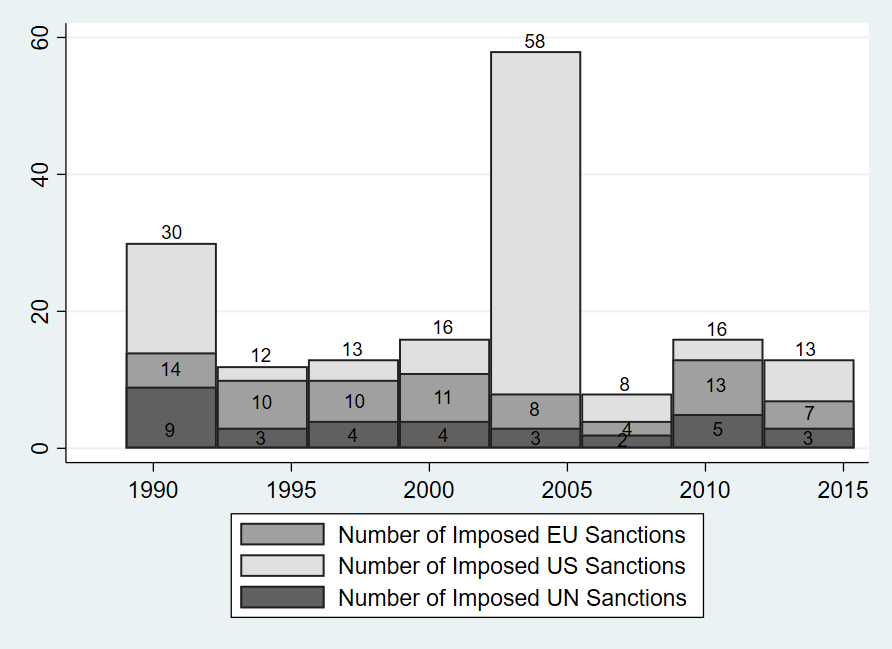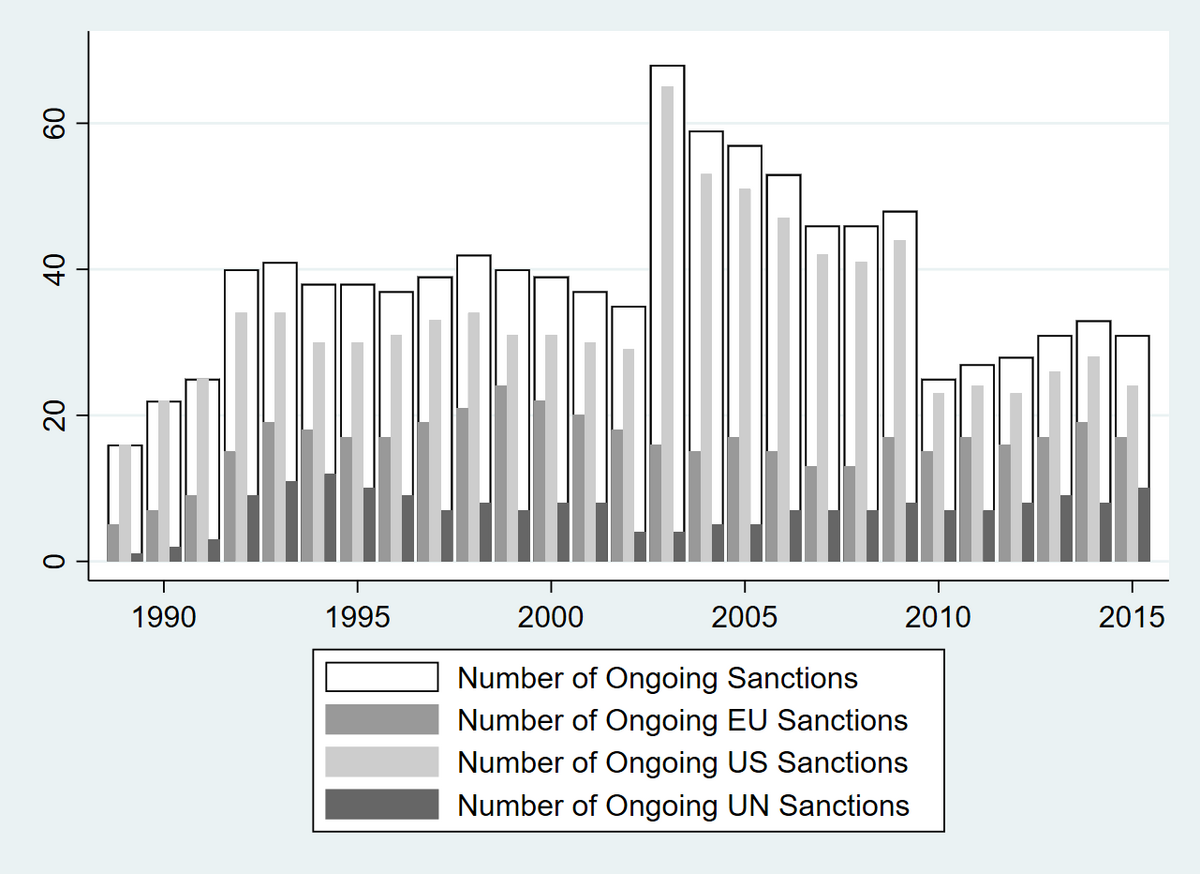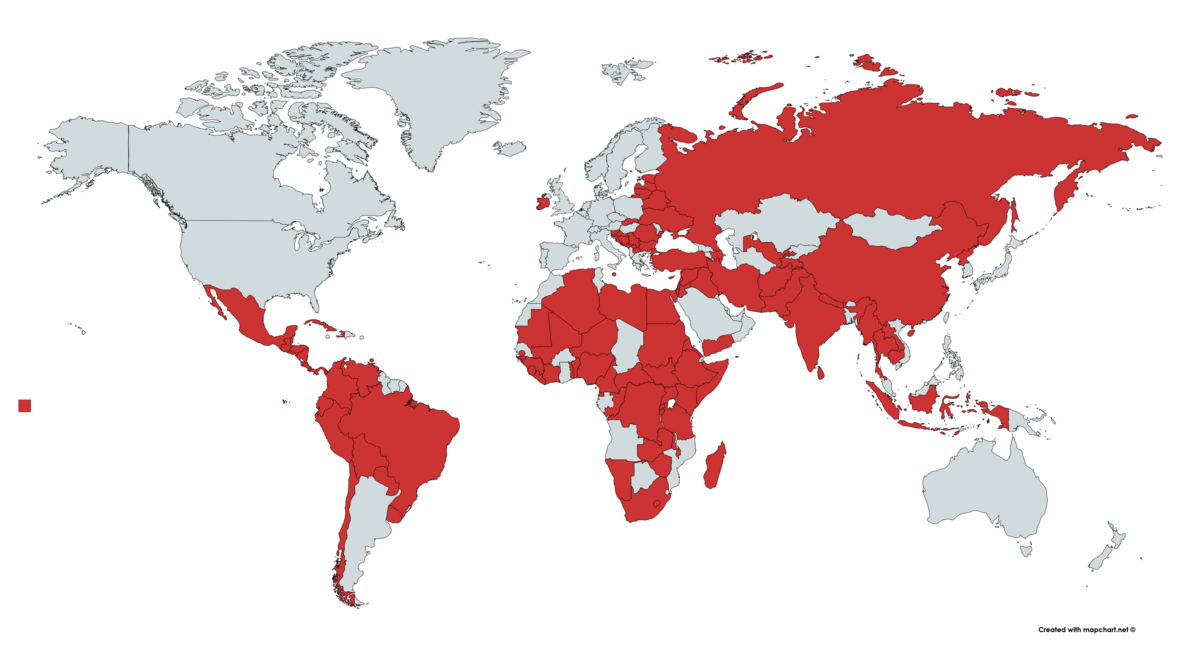EUSANCT: Does Supranational Coercion Work? Onset, Impact and Effectiveness of EU Sanctions
The EUSANCT Dataset covers sanction threats and imposed sanctions by the European Union, the United States and the United Nations from 1989-2015.
Disaggregating the sanctioning efforts from the EU, the US and the UN, the EUSANCT Dataset shows that the imposition and effectiveness of sanctions varies widely between these senders. EUSANCT is a tool for sender-focused analyses and related examinations – and allows scholars to analyze the conditions under which the liberal senders have employed a wide range of economic measures during the entire post-Cold War era. Moreover, this comprehensive dataset traces the evolution and effectiveness of economic coercion over time. The research community will thus find the database useful to analyze standard questions about the onset, side-effects and effectiveness of sanctions.
EUSANCT consists of a case-level and a dyadic version. The first database contains 325 sanction threats and imposed sanctions by the EU, the US, the UN or a coalition of these senders. Additionally – in order to explain the onset of sanctions or the effect of sanctions on certain outcomes – the second version is a dyadic dataset that covers 199 countries for the period from 1989-2015, resulting in 5.077 country-years, and contains the information from the case-level dataset.
The EUSANCT Dataset amends, merges and updates some of the most widely used sanction data sources that have been developed in recent years: the Threat and Imposition of Economic Sanctions (TIES) dataset (Morgan et al., 2009; 2014), the dataset by Hufbauer, Schott and Elliot (HSE) (Hufbauer et al., 1990; 2009) and the GIGA Sanctions Dataset (Portela and von Soest, 2012). Since EUSANCT is built upon these datasets, we would like to thank the authors of these resources for their support: T. Clifton Morgan, Clara Portela and Christian von Soest.
Moreover, we gratefully acknowledge financial support through the Beethoven scheme of the German Research Foundation and the Polish National Science Center (Project UMO-2014/15/G/HS5/04845, DFG code: 749/15) – as well as the "Zeit-Stiftung Ebelin und Gerd Bucerius" and the German Marshall Fund for their support through the 2018 Helmut Schmidt Fellowship.
When using EUSANCT, please cite the dataset article:
Weber P.M., Schneider G. (2020) Post-cold war sanctioning by the EU, the UN, and the US: Introducing the EUSANCT dataset. Conflict Management and Peace Science.
If needed, please also cite the respective codebook:
Weber P.M., Schneider G. (2020) EUSANCT Dataset – Codebook: Case-level Dataset – Version 1.0
or
Weber P.M., Schneider G. (2020) EUSANCT Dataset – Codebook: Dyadic Dataset – Version 1.0
Codebook and Data
You can download the EUSANCT Case-level Dataset (and the codebook) as an EXCEL or DTA file as well as the Dyadic Dataset (and the codebook) as an EXCEL or DTA file. You may also download the Case Summaries (all sources for each individual case that we have obtained from the Nexis news database are available upon request – so please make sure to request the respective sources before citing parts of the case summaries).
Student Assistants and Coders
We have received superb research assistance from Pavlina Boyanova, Ulrik Pershagen and Oleksandr Shevchuk as well as from the EUSANCT coders Julia Habich, Franziska Hohlstein, Elisa Kollenda, Lise Moawad, Pattamon Poonsiri, Katharina Potinius and Lynnae Sauer.



